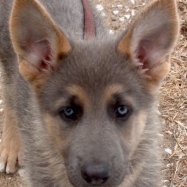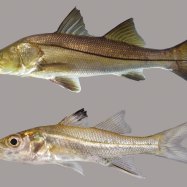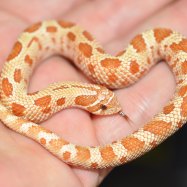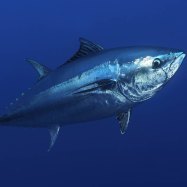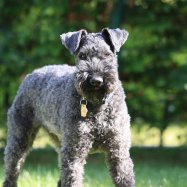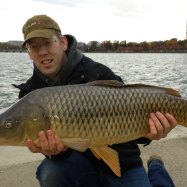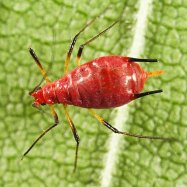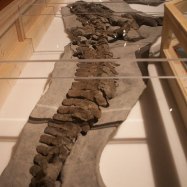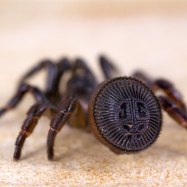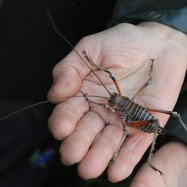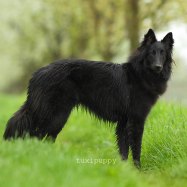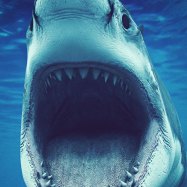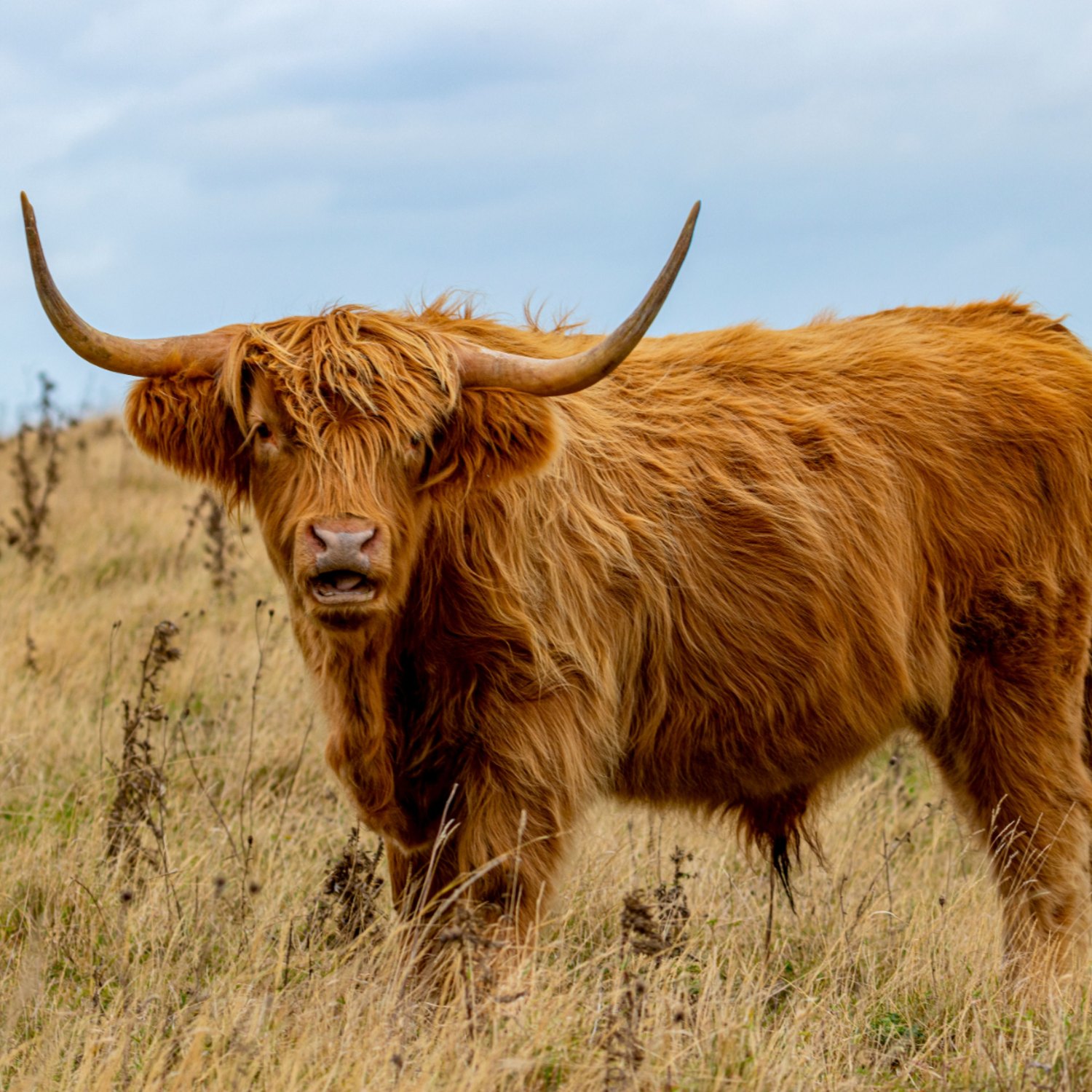
Highland Cattle
4-6 feet
Highland Cattle are charming, long-haired cows that hail from the Scottish Highlands. Standing at 4-6 feet long, these Bovidae family members are known for their large, robust bodies. Visit the Highlands to see these majestic creatures in their natural habitat. #HighlandCattle #Highlands #Scotland
Animal Details Summary:
Common Name: Highland Cattle
Kingdom: Animalia
Habitat: Grasslands
The Majestic Highland Cattle: Beauty and Strength on the Scottish Highlands
Highland cattle, also known as "hairy cows," are a breed that draws the attention of many with their striking appearance and unique characteristics. These robust and majestic animals are native to the rugged highlands of Scotland, making them an iconic symbol of the country. But these cattle are not just known for their looks, they have a rich history and fascinating qualities that set them apart from other cattle breeds. Let's dive deeper into the world of Highland cattle and discover what makes them so special Highland Cattle.A Brief Overview of Highland Cattle
Scientifically known as Bos taurus, Highland cattle are a domesticated breed of cattle that belongs to the Bovidae family. They are one of the oldest breeds of cattle and have been around for centuries, dating back to the 6th century. These animals have a gentle nature, and their iconic long, shaggy hair and impressive horns make them a popular choice among farmers and cattle enthusiasts.The Habitat of Highland Cattle
Highland cattle are well-adapted to living in harsh climates and rough terrains, making them a common sight in the Scottish Highlands. They thrive in open grasslands and pastures, and their thick, curly hair provides insulation and protection against the harsh weather conditions. The Highlands' cold, damp climate is perfect for these cattle, and their thick coats protect them from the unpredictable weather.Feeding Habits of Highland Cattle
Highland cattle are herbivores and primarily feed on grass. They are known for their ability to graze in areas where other cattle breeds cannot, making them an essential part of maintaining the Scottish Highlands' natural ecosystem. They have a keen sense of smell, allowing them to find food in poor weather conditions, and their long, coarse tongues can wrap around the grass, allowing them to graze more efficiently Hoopoe.Geographical Distribution and Country of Origin
As the name suggests, Highland cattle originated from the Highlands of Scotland, specifically in the North-Western part of the country. They are also found on the Isle of Skye and the Outer Hebrides. These animals are considered a Scottish icon, and their popularity has led to their distribution in other countries, including England, Australia, and the United States.The Beautiful Colors of Highland Cattle
One of the most notable characteristics of Highland cattle is their striking coat color. These cattle come in various colors, ranging from black, red, dun, and yellow, with different combinations and shades in between. Their coats can also vary in texture, from straight and wavy to curly and long. Their hair may be an attractive feature, but it also provides protection from the elements, making them well-suited for their natural habitat.Size and Body Shape of Highland Cattle
Highland cattle are known for their large and robust body shape. Their long, shaggy coats make them appear even larger than they are. Typically, they can weigh anywhere between 900-1,300 lbs and can stand at an impressive 4-6 feet in height. The bulls are slightly larger than the cows and have magnificent horns that can grow up to 3 feet in length.Highland Cattle and their Role in the Scottish Culture
Highland cattle have held a significant role in Scottish culture for centuries. They are considered a symbol of the country's rugged and resilient nature and are an essential part of Scottish folklore. Their presence can be seen in numerous pieces of art, literature, and even on coins. The Royal Highland Show, one of the largest agricultural shows in the UK, has a special category dedicated to the Highland cattle, further solidifying their significance in Scottish culture.Why are They so Popular?
Highland cattle's popularity goes beyond their looks; they also possess unique qualities that make them valuable to farmers and cattle breeders. For starters, they have a gentle nature, making them great grazers and easy to handle. Their long, thick coats also make them low-maintenance, reducing the need for regular grooming compared to other breeds.Moreover, Highland cattle are known for their hardiness and resilience, making them excellent survivors in harsh weather conditions. They can withstand extreme cold temperatures and thrive on a diet of foraged herbs, mosses, and grass, making them cost-effective to raise.
The Role of Highland Cattle in Maintaining the Ecosystem
Highland cattle's grazing habits make them essential in maintaining the Scottish Highlands' natural ecosystem. Their foraging behavior helps reduce the growth of invasive plant species, allowing native plants to thrive. Their trampling also helps in seed dispersal, encouraging plant growth, and creating a diverse landscape. Their presence also attracts various wildlife, making them crucial in maintaining a balanced ecosystem.In Conclusion
Highland cattle are more than just a pretty face; they are an integral part of Scotland's history, culture, and ecosystem. Their majestic appearance, hardiness, and gentle nature make them stand out amongst other breeds and continue to capture the hearts of people worldwide. These animals are living proof that beauty and strength can coexist in perfect harmony. The next time you see a Highland cow, take a moment to appreciate their uniqueness and significance in the world.

Highland Cattle
Animal Details Highland Cattle - Scientific Name: Bos taurus
- Category: Animals H
- Scientific Name: Bos taurus
- Common Name: Highland Cattle
- Kingdom: Animalia
- Phylum: Chordata
- Class: Mammalia
- Order: Artiodactyla
- Family: Bovidae
- Habitat: Grasslands
- Feeding Method: Herbivore
- Geographical Distribution: Scotland, United Kingdom
- Country of Origin: Scotland
- Location: Highlands
- Animal Coloration: Various colors including black, red, dun, and yellow
- Body Shape: Large and robust
- Length: 4-6 feet
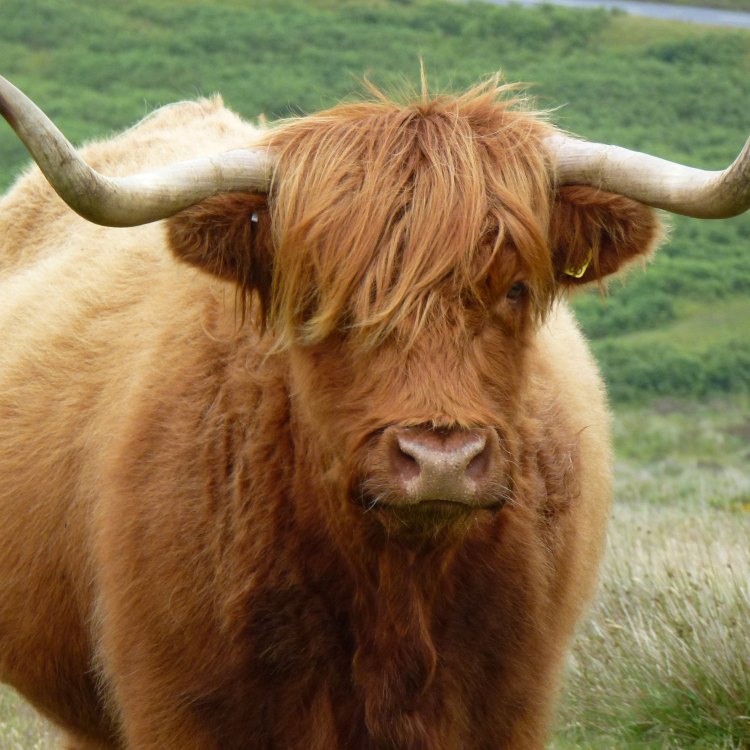
Highland Cattle
- Adult Size: 3.5-5 feet tall at the shoulder
- Average Lifespan: 20-25 years
- Reproduction: Sexual
- Reproductive Behavior: Polygynous
- Sound or Call: Low-pitched mooing
- Migration Pattern: Non-migratory
- Social Groups: Herd
- Behavior: Docile and gentle
- Threats: Hunting, loss of habitat
- Conservation Status: Not listed by IUCN
- Impact on Ecosystem: Maintains biodiversity in grassland habitats
- Human Use: Meat, milk, and wool production, as well as for show and ornamental purposes
- Distinctive Features: Long, shaggy hair and curved horns
- Interesting Facts: They are excellent foragers and can graze on rough vegetation that other cattle breeds may have difficulty with
- Predator: Sporadic attacks by wolves, bears, and mountain lions
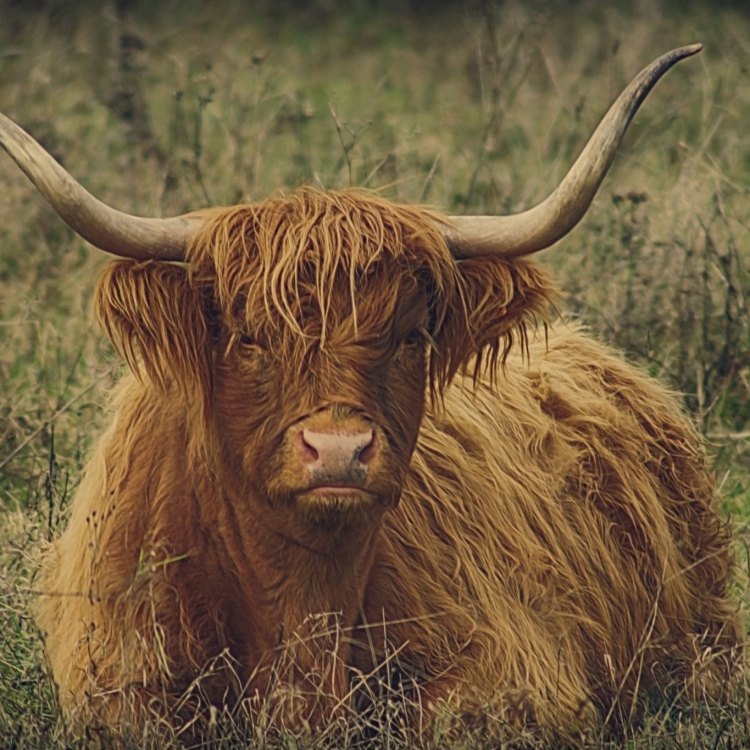
Bos taurus
The Mighty and Majestic Highland Cattle: Guardians of the Grasslands
Deep in the misty Scottish highlands, stands a breed of cattle unlike any other. With their long, shaggy hair and impressive horns, the Highland Cattle not only exude an air of strength and resilience but also play a crucial role in preserving the delicate balance of their unique ecosystem.At first glance, one may mistake these magnificent creatures for wild bison or hairy yaks. However, the Highland Cattle is indeed a domesticated breed, known for their docile and gentle nature PeaceOfAnimals.Com. But do not be fooled by their calm demeanor, as these cattle have a fascinating history and a crucial role to play in their native land.
So, let us embark on a journey to explore the world of Highland Cattle, and discover what makes them truly one of a kind.
Origin and Physical Characteristics
Highland Cattle, also known as Highland cows, are a Scottish breed of cattle known for their iconic long, shaggy hair and curved horns. They are believed to have descended from the ancient cattle breeds that roamed Scotland thousands of years ago.Their thick, double-layered coat is their most distinctive physical feature, and it helps them survive harsh weather conditions in the Scottish Highlands. Their long hair not only provides insulation against the cold but also protects them from the heavy rain and winds of their rugged habitat. This unique coat comes in a variety of colors, from red, black, brindle, to dun.
This breed is also known for its impressive size, standing at about 3.5-5 feet tall at the shoulder and weighing anywhere between 900 to 1,800 pounds Hammerhead Shark. Their size and sturdy build make them well adapted to the rough terrains of the Scottish Highlands.
A Glimpse into Their Behavior
Highland Cattle are usually found in herds, ranging from five to twenty individuals, led by a dominant male known as the "bull." This social behavior is known as polygyny, where one male mates with multiple females within his herd.These cattle are known for their docile and gentle nature, making them ideal for small-scale farming and even as pets. They are also highly intelligent and have a strong sense of herd mentality, often staying close and protective of their young ones.
Another notable aspect of their behavior is their distinct sound or call. Highland Cattle are known for their low-pitched mooing, which they use to communicate with other members of the herd. This comforting sound can often be heard echoing through the hills and glens of their highland home.
Threats and Conservation Status
While Highland Cattle are not listed by the International Union for Conservation of Nature (IUCN), they still face several threats that could endanger their population. The most significant threat is hunting, as they are often targeted for their meat, milk, and wool. The loss of habitat due to agricultural practices and other human activities also poses a significant danger to these beautiful creatures.Fortunately, there have been several conservation efforts to protect the Highland Cattle. These efforts include promoting their sustainable use for farming and educating the public about their importance in maintaining the biodiversity of grassland habitats. As a result of these efforts, the population of Highland Cattle has steadily increased in recent years.
Impact on the Ecosystem
Highland Cattle play a crucial role in preserving the delicate balance of their unique ecosystem. As herbivores, they mainly graze on rough vegetation that other cattle breeds may have difficulty with. This behavior helps maintain biodiversity by preventing invasive plant species from overtaking the natural vegetation, thus preserving the delicate ecosystem of the Scottish Highlands.Moreover, their long, shaggy hair also helps in the dispersal of seeds from plants, aiding in the growth of new vegetation. Their hooves also help in aerating the soil, making it nutrient-rich and enhancing the growth of plants.
Human Use and Interesting Facts
Highland Cattle are not just beautiful creatures but also have practical uses for humans. They are mainly used for meat, milk, and wool production. The meat of Highland Cattle is renowned for its lean, flavorful, and healthy properties. Their milk, although low in quantity, is high in butterfat content, making it ideal for making cheese and other dairy products. Their long, coarse hair is also used to make wool, which is often used to make traditional Scottish garments, such as kilts.Apart from their practical uses, Highland Cattle are also popular for show and ornamental purposes. Their majestic appearance and calm demeanor make them a favorite among hobby farmers and animal lovers alike.
Did you know that Highland Cattle are also excellent foragers? In fact, they are known to graze on rough vegetation that other cattle breeds may find difficult to eat. They can even digest plants that are toxic to other animals, thanks to their unique digestive system. This not only makes them self-sufficient but also reduces the cost of feeding them.
Predators and Conclusion
Highland Cattle are primarily prey for wolves, bears, and mountain lions. While sporadic attacks have been reported, these cattle are generally hardy and can fend for themselves against predators.In conclusion, Highland Cattle are much more than just a beautiful breed of cattle. They are guardians of their native land, playing a vital role in maintaining the delicate balance of their unique ecosystem. They are resilient, adaptable, and a crucial part of Scottish culture and heritage. Let us continue to admire and protect these majestic creatures, ensuring their survival for years to come.
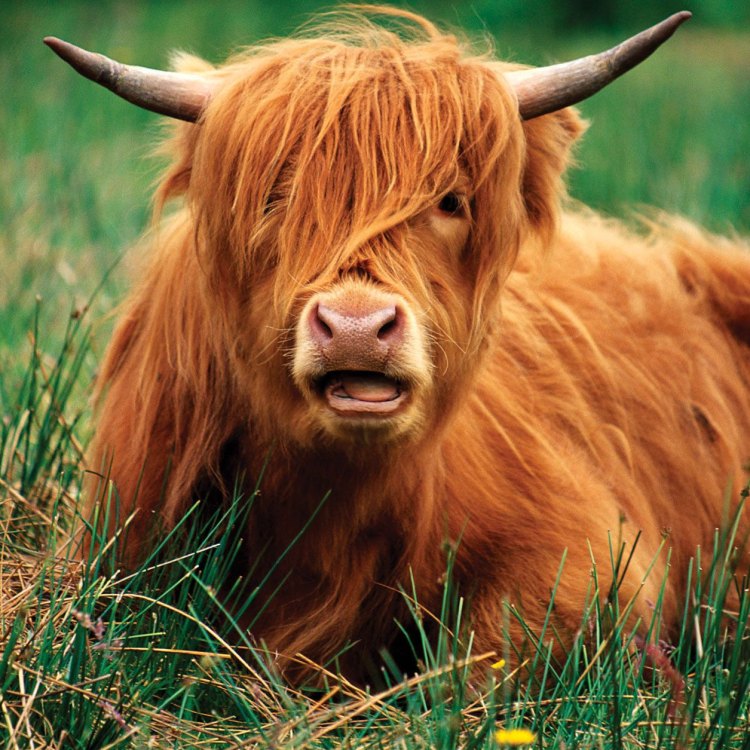
The Majestic Highland Cattle: Beauty and Strength on the Scottish Highlands
Disclaimer: The content provided is for informational purposes only. We cannot guarantee the accuracy of the information on this page 100%. All information provided here may change without prior notice.

